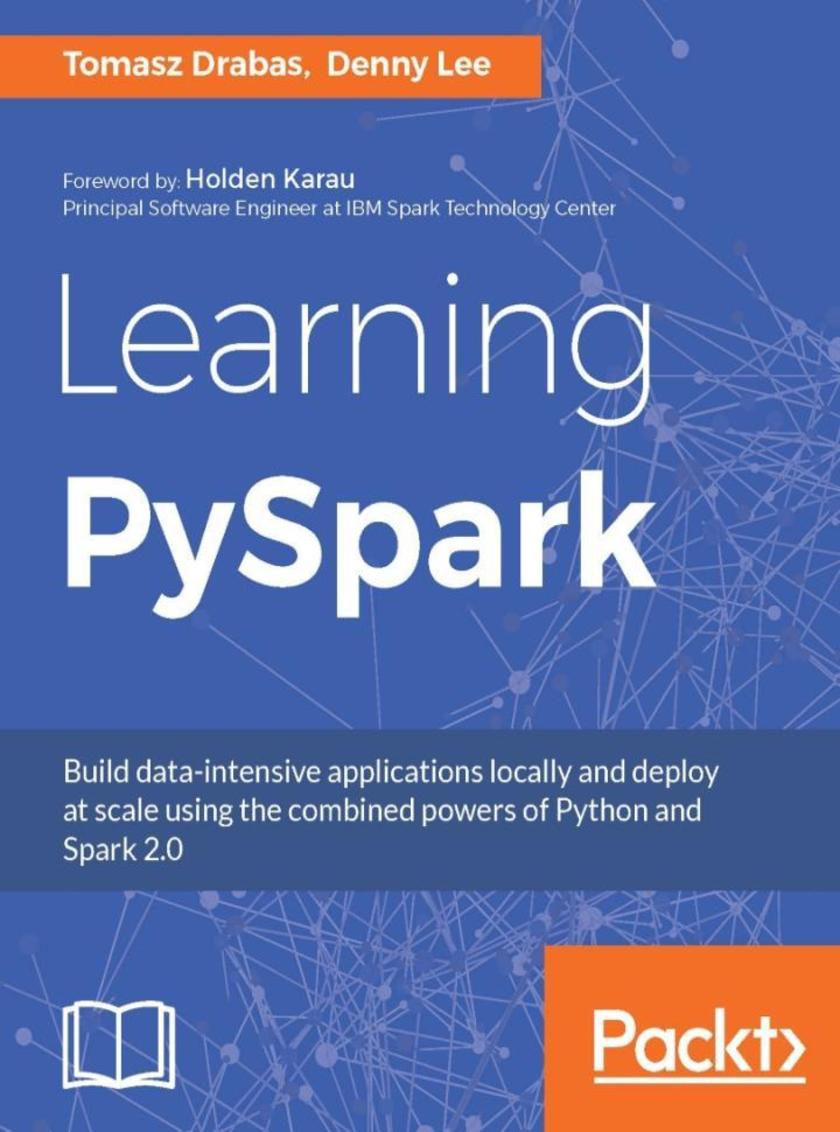
Learning PySpark
¥80.65
Build data-intensive applications locally and deploy at scale using the combined powers of Python and Spark 2.0 About This Book Learn why and how you can efficiently use Python to process data and build machine learning models in Apache Spark 2.0 Develop and deploy efficient, scalable real-time Spark solutions Take your understanding of using Spark with Python to the next level with this jump start guide Who This Book Is For If you are a Python developer who wants to learn about the Apache Spark 2.0 ecosystem, this book is for you. A firm understanding of Python is expected to get the best out of the book. Familiarity with Spark would be useful, but is not mandatory. What You Will Learn Learn about Apache Spark and the Spark 2.0 architecture Build and interact with Spark DataFrames using Spark SQL Learn how to solve graph and deep learning problems using GraphFrames and TensorFrames respectively Read, transform, and understand data and use it to train machine learning models Build machine learning models with MLlib and ML Learn how to submit your applications programmatically using spark-submit Deploy locally built applications to a cluster In Detail Apache Spark is an open source framework for efficient cluster computing with a strong interface for data parallelism and fault tolerance. This book will show you how to leverage the power of Python and put it to use in the Spark ecosystem. You will start by getting a firm understanding of the Spark 2.0 architecture and how to set up a Python environment for Spark. You will get familiar with the modules available in PySpark. You will learn how to abstract data with RDDs and DataFrames and understand the streaming capabilities of PySpark. Also, you will get a thorough overview of machine learning capabilities of PySpark using ML and MLlib, graph processing using GraphFrames, and polyglot persistence using Blaze. Finally, you will learn how to deploy your applications to the cloud using the spark-submit command. By the end of this book, you will have established a firm understanding of the Spark Python API and how it can be used to build data-intensive applications. Style and approach This book takes a very comprehensive, step-by-step approach so you understand how the Spark ecosystem can be used with Python to develop efficient, scalable solutions. Every chapter is standalone and written in a very easy-to-understand manner, with a focus on both the hows and the whys of each concept.

Natural Language Processing: Python and NLTK
¥152.59
Learn to build expert NLP and machine learning projects using NLTK and other Python libraries About This Book Break text down into its component parts for spelling correction, feature extraction, and phrase transformation Work through NLP concepts with simple and easy-to-follow programming recipes Gain insights into the current and budding research topics of NLP Who This Book Is For If you are an NLP or machine learning enthusiast and an intermediate Python programmer who wants to quickly master NLTK for natural language processing, then this Learning Path will do you a lot of good. Students of linguistics and semantic/sentiment analysis professionals will find it invaluable. What You Will Learn The scope of natural language complexity and how they are processed by machines Clean and wrangle text using tokenization and chunking to help you process data better Tokenize text into sentences and sentences into words Classify text and perform sentiment analysis Implement string matching algorithms and normalization techniques Understand and implement the concepts of information retrieval and text summarization Find out how to implement various NLP tasks in Python In Detail Natural Language Processing is a field of computational linguistics and artificial intelligence that deals with human-computer interaction. It provides a seamless interaction between computers and human beings and gives computers the ability to understand human speech with the help of machine learning. The number of human-computer interaction instances are increasing so it’s becoming imperative that computers comprehend all major natural languages. The first NLTK Essentials module is an introduction on how to build systems around NLP, with a focus on how to create a customized tokenizer and parser from scratch. You will learn essential concepts of NLP, be given practical insight into open source tool and libraries available in Python, shown how to analyze social media sites, and be given tools to deal with large scale text. This module also provides a workaround using some of the amazing capabilities of Python libraries such as NLTK, scikit-learn, pandas, and NumPy. The second Python 3 Text Processing with NLTK 3 Cookbook module teaches you the essential techniques of text and language processing with simple, straightforward examples. This includes organizing text corpora, creating your own custom corpus, text classification with a focus on sentiment analysis, and distributed text processing methods. The third Mastering Natural Language Processing with Python module will help you become an expert and assist you in creating your own NLP projects using NLTK. You will be guided through model development with machine learning tools, shown how to create training data, and given insight into the best practices for designing and building NLP-based applications using Python. This Learning Path combines some of the best that Packt has to offer in one complete, curated package and is designed to help you quickly learn text processing with Python and NLTK. It includes content from the following Packt products: NTLK essentials by Nitin Hardeniya Python 3 Text Processing with NLTK 3 Cookbook by Jacob Perkins Mastering Natural Language Processing with Python by Deepti Chopra, Nisheeth Joshi, and Iti Mathur Style and approach This comprehensive course creates a smooth learning path that teaches you how to get started with Natural Language Processing using Python and NLTK. You’ll learn to create effective NLP and machine learning projects using Python and NLTK.
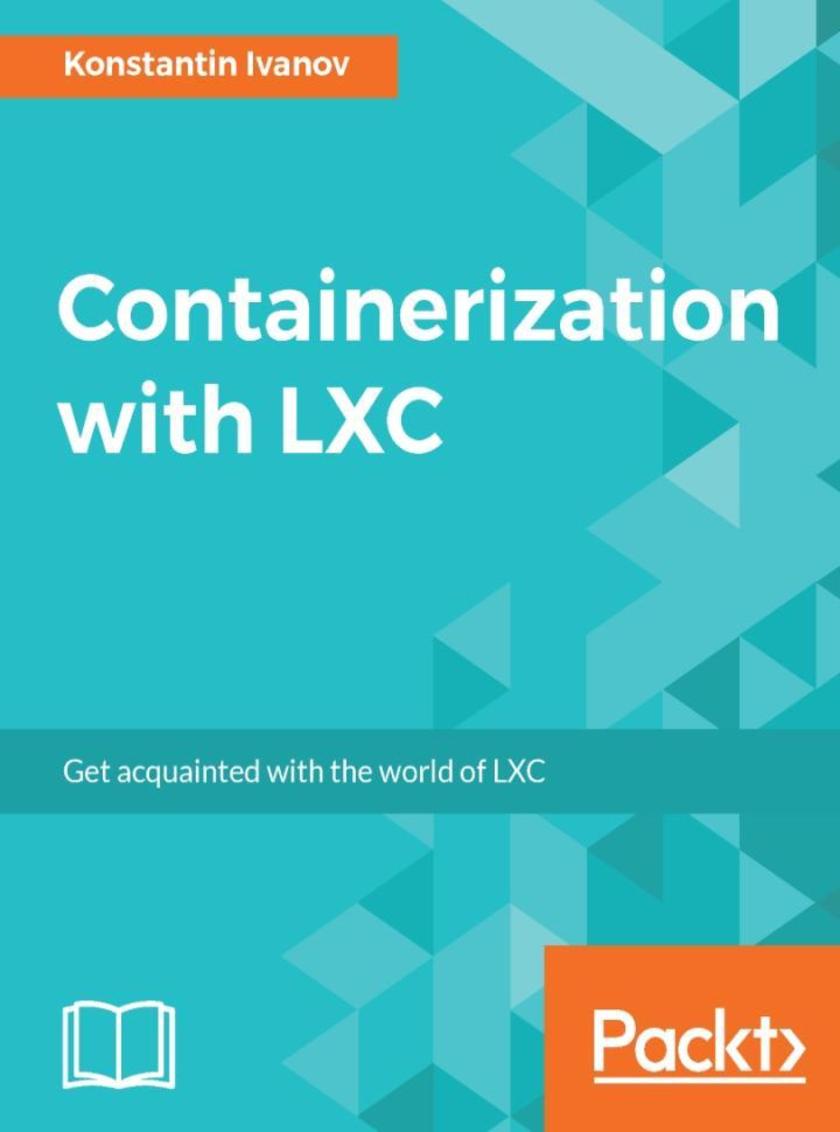
Containerization with LXC
¥90.46
Get acquainted with the world of LXC About This Book Get the most practical and up-to-date resource on LXC and take full advantage of what Linux containers can offer in the day-to-day operations of large-scale applications Learn how to deploy and administer various workloads such as web applications inside LXC Save your organization time and money by building robust and secure containers and by speeding the deployment process of your software Who This Book Is For This book is for Linux engineers and software developers who are looking to deploy applications in a fast, secure, and scalable way for use in testing and production. What You Will Learn Deep dive into the foundations of Linux containers with kernel namespaces and cgroups Install, configure, and administer Linux containers with LXC and libvirt Begin writing applications using Python libvirt bindings Take an in-depth look at container networking Set up monitoring and security with LXC Build and deploy a highly available application with LXC in the cloud In Detail In recent years, containers have gained wide adoption by businesses running a variety of application loads. This became possible largely due to the advent of kernel namespaces and better resource management with control groups (cgroups). Linux containers (LXC) are a direct implementation of those kernel features that provide operating system level virtualization without the overhead of a hypervisor layer. This book starts by introducing the foundational concepts behind the implementation of LXC, then moves into the practical aspects of installing and configuring LXC containers. Moving on, you will explore container networking, security, and backups. You will also learn how to deploy LXC with technologies like Open Stack and Vagrant. By the end of the book, you will have a solid grasp of how LXC is implemented and how to run production applications in a highly available and scalable way. Style and approach A practical guide that introduces the core technologies behind Linux containers and provides a deep dive into installation, configuration, and operations of LXC.
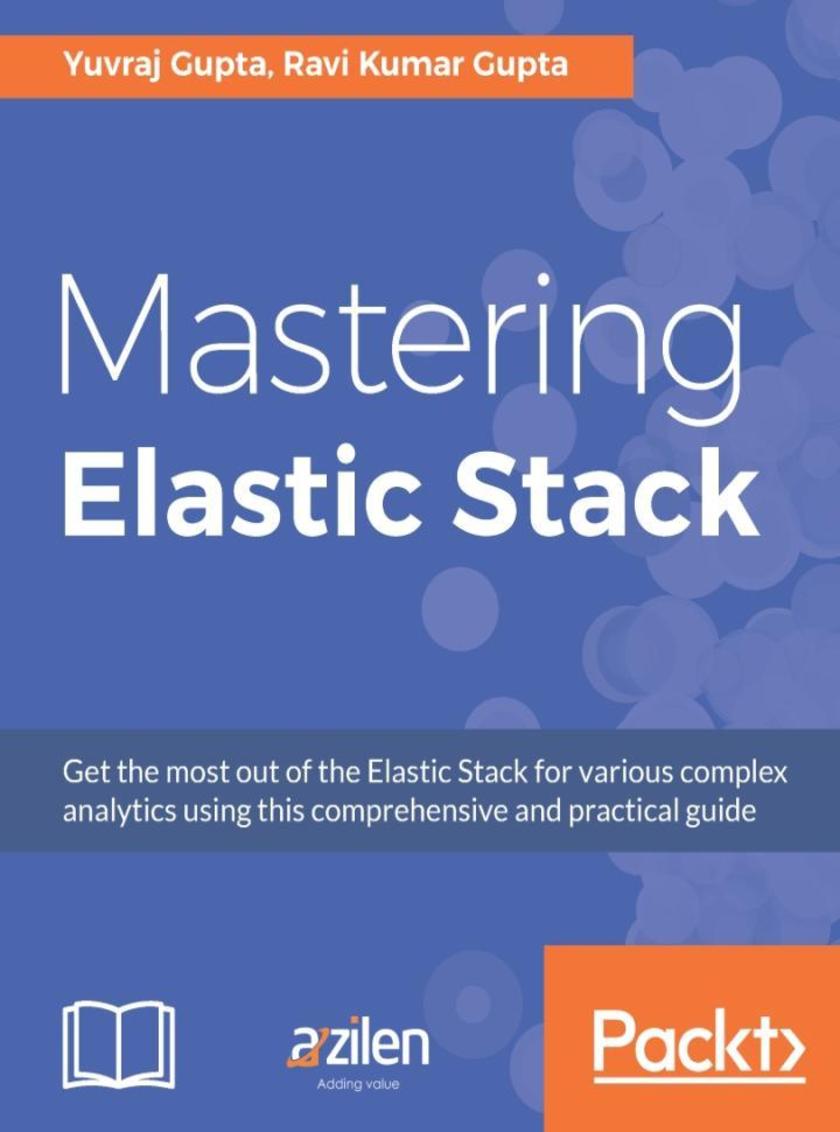
Mastering Elastic Stack
¥99.18
Get the most out of the Elastic Stack for various complex analytics using this comprehensive and practical guide About This Book Your one-stop solution to perform advanced analytics with Elasticsearch, Logstash, and Kibana Learn how to make better sense of your data by searching, analyzing, and logging data in a systematic way This highly practical guide takes you through an advanced implementation on the ELK stack in your enterprise environment Who This Book Is For This book cater to developers using the Elastic stack in their day-to-day work who are familiar with the basics of Elasticsearch, Logstash, and Kibana, and now want to become an expert at using the Elastic stack for data analytics. What You Will Learn Build a pipeline with help of Logstash and Beats to visualize Elasticsearch data in Kibana Use Beats to ship any type of data to the Elastic stack Understand Elasticsearch APIs, modules, and other advanced concepts Explore Logstash and it’s plugins Discover how to utilize the new Kibana UI for advanced analytics See how to work with the Elastic Stack using other advanced configurations Customize the Elastic Stack and plugin development for each of the component Work with the Elastic Stack in a production environment Explore the various components of X-Pack in detail. In Detail Even structured data is useless if it can’t help you to take strategic decisions and improve existing system. If you love to play with data, or your job requires you to process custom log formats, design a scalable analysis system, and manage logs to do real-time data analysis, this book is your one-stop solution. By combining the massively popular Elasticsearch, Logstash, Beats, and Kibana, elastic.co has advanced the end-to-end stack that delivers actionable insights in real time from almost any type of structured or unstructured data source. If your job requires you to process custom log formats, design a scalable analysis system, explore a variety of data, and manage logs, this book is your one-stop solution. You will learn how to create real-time dashboards and how to manage the life cycle of logs in detail through real-life scenarios. This book brushes up your basic knowledge on implementing the Elastic Stack and then dives deeper into complex and advanced implementations of the Elastic Stack. We’ll help you to solve data analytics challenges using the Elastic Stack and provide practical steps on centralized logging and real-time analytics with the Elastic Stack in production. You will get to grip with advanced techniques for log analysis and visualization. Newly announced features such as Beats and X-Pack are also covered in detail with examples. Toward the end, you will see how to use the Elastic stack for real-world case studies and we’ll show you some best practices and troubleshooting techniques for the Elastic Stack. Style and approach This practical guide shows you how to perform advanced analytics with the Elastic stack through real-world use cases. It includes common and some not so common scenarios to use the Elastic stack for data analysis.
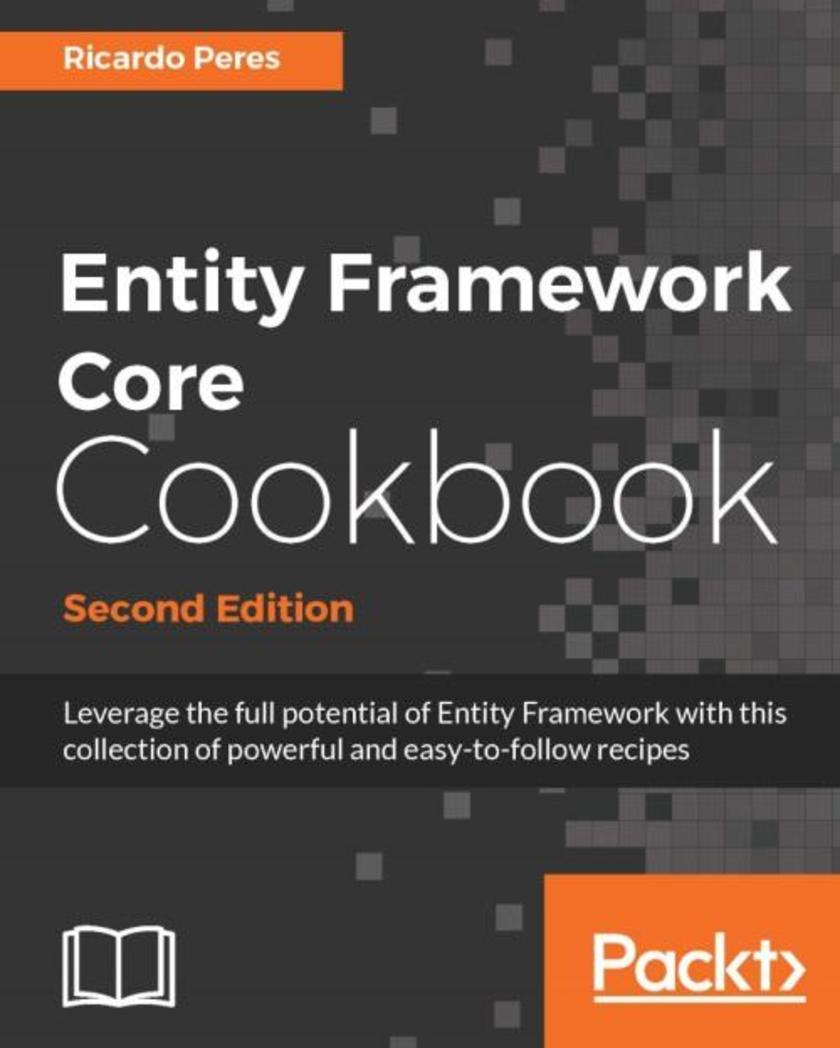
Entity Framework Core Cookbook - Second Edition
¥90.46
Leverage the full potential of Entity Framework with this collection of powerful and easy-to-follow recipes About This Book Learn how to use the new features of Entity Framework Core 1 Improve your queries by leveraging some of the advanced features Avoid common pitfalls Make the best of your .NET APIs by integrating with Entity Framework Who This Book Is For This book is for .NET developers who work with relational databases on a daily basis and understand the basics of Entity Framework, but now want to use it in a more efficient manner. You are expected to have some prior knowledge of Entity Framework. What You Will Learn Master the technique of using sequence key generators Validate groups of entities that are to be saved / updated Improve MVC applications that cover applications developed using ASP.NET MVC Core 1 Retrieve database information (table, column names, and so on) for entities Discover optimistic concurrency control and pessimistic concurrency control. Implement Multilatency on the data side of things. Enhance the performance and/or scalability of Entity Framework Core Explore and overcome the pitfalls of Entity Framework Core In Detail Entity Framework is a highly recommended Object Relation Mapping tool used to build complex systems. In order to survive in this growing market, the knowledge of a framework that helps provide easy access to databases, that is, Entity Framework has become a necessity. This book will provide .NET developers with this knowledge and guide them through working efficiently with data using Entity Framework Core. You will start off by learning how to efficiently use Entity Framework in practical situations. You will gain a deep understanding of mapping properties and find out how to handle validation in Entity Framework. The book will then explain how to work with transactions and stored procedures along with improving Entity Framework using query libraries. Moving on, you will learn to improve complex query scenarios and implement transaction and concurrency control. You will then be taught to improve and develop Entity Framework in complex business scenarios. With the concluding chapter on performance and scalability, this book will get you ready to use Entity Framework proficiently. Style and approach Filled with rich code-based examples, this book takes a recipe-based approach that will teach .NET developers to improve their understanding of Entity Framework and help them effortlessly apply this knowledge in everyday situations.
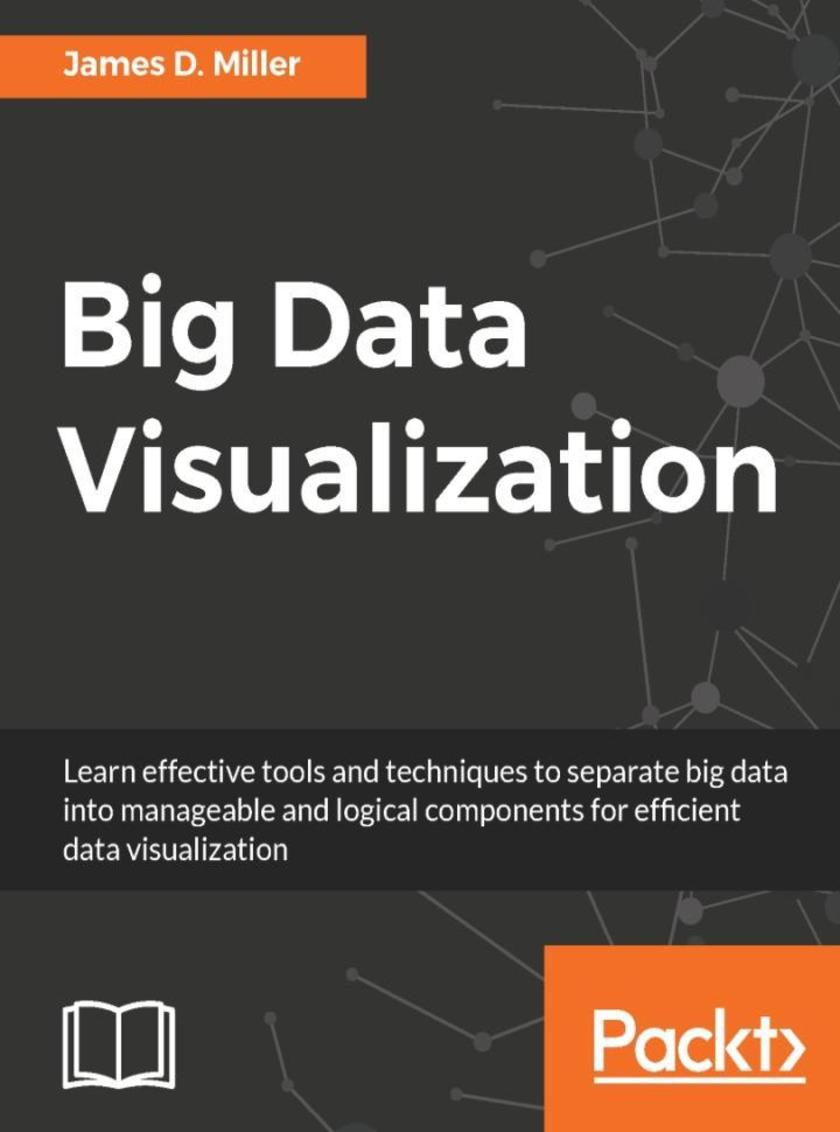
Big Data Visualization
¥80.65
Learn effective tools and techniques to separate big data into manageable and logical components for efficient data visualization About This Book This unique guide teaches you how to visualize your cluttered, huge amounts of big data with ease It is rich with ample options and solid use cases for big data visualization, and is a must-have book for your shelf Improve your decision-making by visualizing your big data the right way Who This Book Is For This book is for data analysts or those with a basic knowledge of big data analysis who want to learn big data visualization in order to make their analysis more useful. You need sufficient knowledge of big data platform tools such as Hadoop and also some experience with programming languages such as R. This book will be great for those who are familiar with conventional data visualizations and now want to widen their horizon by exploring big data visualizations. What You Will Learn Understand how basic analytics is affected by big data Deep dive into effective and efficient ways of visualizing big data Get to know various approaches (using various technologies) to address the challenges of visualizing big data Comprehend the concepts and models used to visualize big data Know how to visualize big data in real time and for different use cases Understand how to integrate popular dashboard visualization tools such as Splunk and Tableau Get to know the value and process of integrating visual big data with BI tools such as Tableau Make sense of the visualization options for big data, based upon the best suited visualization techniques for big data In Detail When it comes to big data, regular data visualization tools with basic features become insufficient. This book covers the concepts and models used to visualize big data, with a focus on efficient visualizations. This book works around big data visualizations and the challenges around visualizing big data and address characteristic challenges of visualizing like speed in accessing, understanding/adding context to, improving the quality of the data, displaying results, outliers, and so on. We focus on the most popular libraries to execute the tasks of big data visualization and explore "big data oriented" tools such as Hadoop and Tableau. We will show you how data changes with different variables and for different use cases with step-through topics such as: importing data to something like Hadoop, basic analytics. The choice of visualizations depends on the most suited techniques for big data, and we will show you the various options for big data visualizations based upon industry-proven techniques. You will then learn how to integrate popular visualization tools with graphing databases to see how huge amounts of certain data. Finally, you will find out how to display the integration of visual big data with BI using Cognos BI. Style and approach With the help of insightful real-world use cases, we’ll tackle data in the world of big data. The scalability and hugeness of the data makes big data visualizations different from normal data visualizations, and this book addresses all the difficulties encountered by professionals while visualizing their big data.
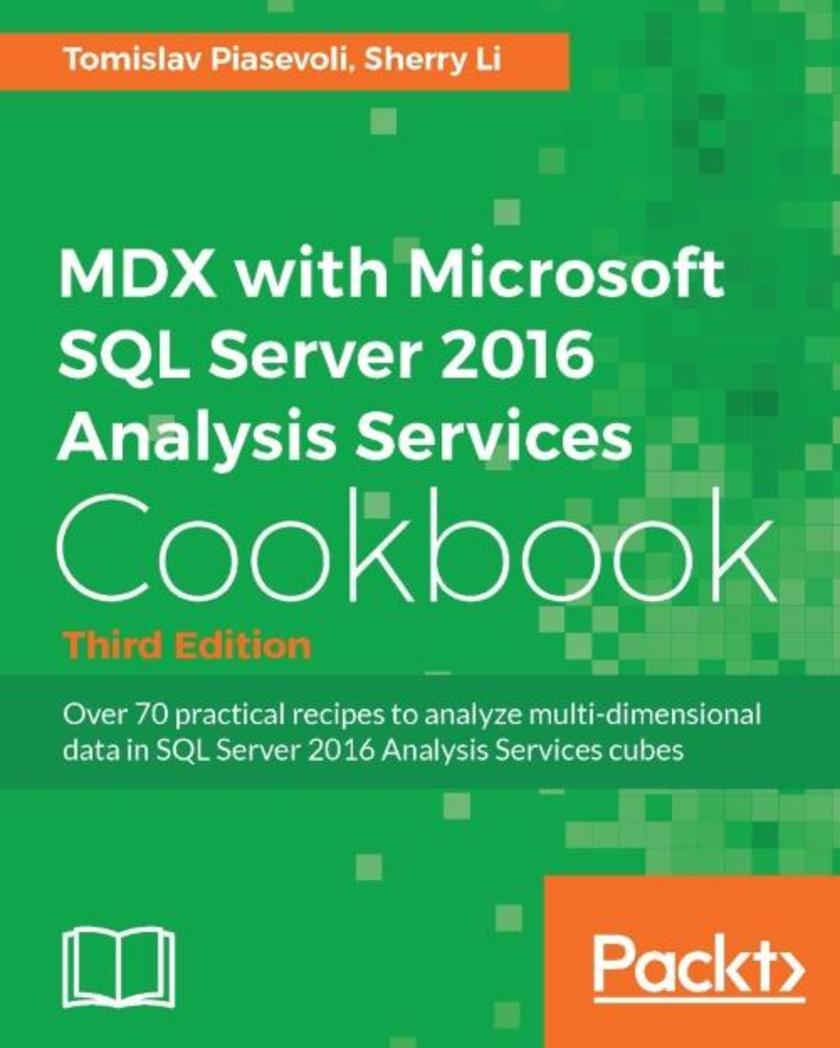
MDX with Microsoft SQL Server 2016 Analysis Services Cookbook - Third Edition
¥99.18
Over 70 practical recipes to analyze multi-dimensional data in SQL Server 2016 Analysis Services cubes About This Book Updated for SQL Server 2016, this book helps you take advantage of the new MDX commands and the new features introduced in SSAS Perform time-related, context-aware, and business related-calculations with ease to enrich your Business Intelligence solutions Collection of techniques to write flexible and high performing MDX queries in SSAS with carefully structured examples Who This Book Is For This book is for anyone who has been involved in working with multidimensional data. If you are a multidimensional cube developer, a multidimensional database administrator, or a report developer who writes MDX queries to access multidimensional cube, this book will help you. If you are a power cube user or an experienced business analyst, you will also find this book invaluable in your data analysis. This book is for you are interested in doing more data analysis so that the management can make timely and accurate business decisions. What You Will Learn Grasp the fundamental MDX concepts, features, and techniques Work with sets Work with Time dimension and create time-aware calculations Make analytical reports compact, concise, and efficient Navigate cubes Master MDX for reporting with Reporting Services (new) Perform business analytics Design efficient cubes and efficient MDX queries Create metadata-driven calculations (new) Capture MDX queries and many other techniques In Detail If you're often faced with MDX challenges, this is a book for you. It will teach you how to solve various real-world business requirements using MDX queries and calculations. Examples in the book introduce an idea or a problem and then guide you through the process of implementing the solution in a step-by-step manner, inform you about the best practices and offer a deep knowledge in terms of how the solution works. Recipes are organized by chapters, each covering a single topic. They start slowly and logically progress to more advanced techniques. In case of complexity, things are broken down. Instead of one, there are series of recipes built one on top of another. This way you are able to see intermediate results and debug potential errors faster. Finally, the cookbook format is here to help you quickly identify the topic of interest and in it a wide range of practical solutions, that is – MDX recipes for your success. Style and approach This book is written in a cookbook format, where you can browse through and look for solutions to a particular problem in one place. Each recipe is short, to the point and grouped by relevancy. All the recipes are sequenced in a logical progression; you will be able to build up your understanding of the topic incrementally.
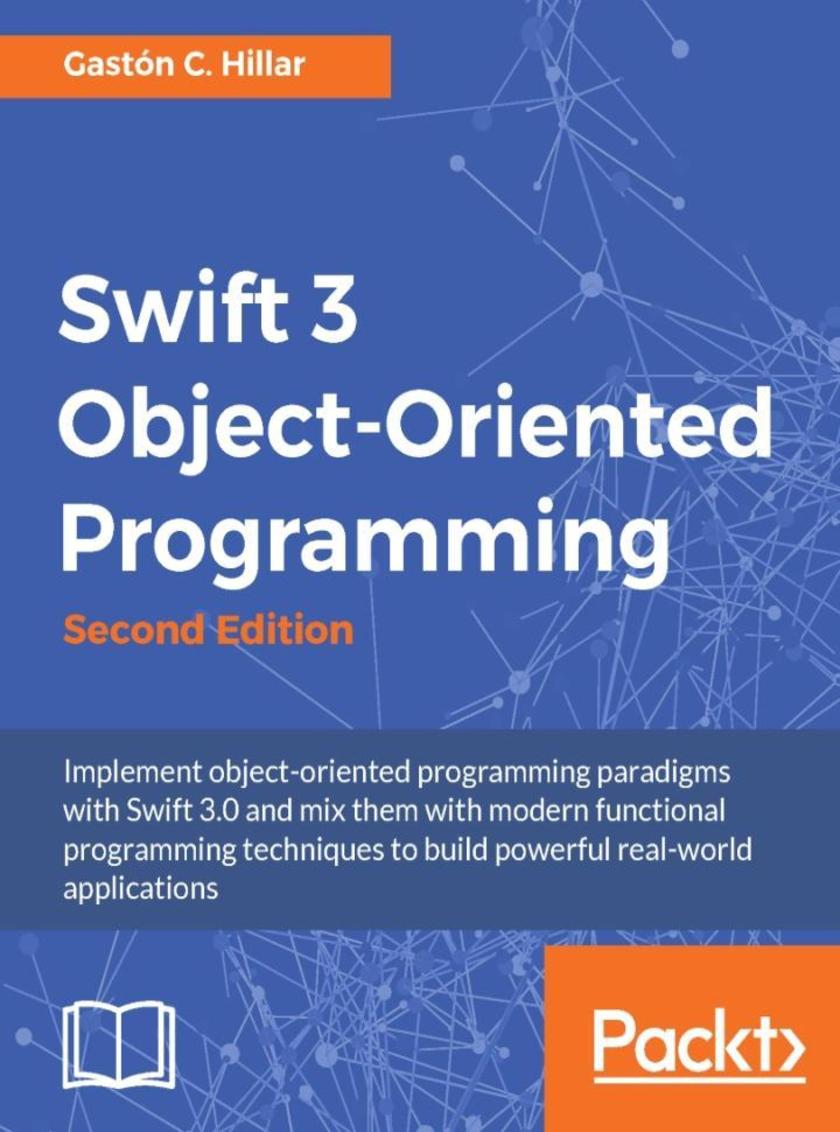
Swift 3 Object-Oriented Programming - Second Edition
¥71.93
Implement object-oriented programming paradigms with Swift 3.0 and mix them with modern functional programming techniques to build powerful real-world applications About This Book Leverage the most efficient object-oriented design patterns in your Swift applications Write robust, safer, and better code using the blueprints that generate objects Build a platform with object-oriented code using real-world elements and represent them in your apps Who This Book Is For This book is for iOS and macOS developers who want to get a detailed practical understanding of object-oriented programming with the latest version of Swift: 3.0. What You Will Learn Write high-quality and easy-to-maintain reusable object-oriented code to build applications for iOS, macOS, and Linux Work with encapsulation, abstraction, and polymorphism using Swift 3.0 Work with classes, instances, properties, and methods in Swift 3.0 Take advantage of inheritance, specialization, and the possibility to overload or override members Implement encapsulation, abstraction, and polymorphism Explore functional programming techniques mixed with object-oriented code in Swift 3.0 Understand the differences between Swift 3.0, previous Swift versions, and Objective-C code In Detail Swift has quickly become one of the most-liked languages and developers’ de-facto choice when building applications that target iOS and macOS. In the new version, the Swift team wants to take its adoption to the next level by making it available for new platforms and audiences. This book introduces the object-oriented paradigm and its implementation in the Swift 3 programming language to help you understand how real-world objects can become part of fundamental reusable elements in the code. This book is developed with XCode 8.x and covers all the enhancements included in Swift 3.0. In addition, we teach you to run most of the examples with the Swift REPL available on macOS and Linux, and with a Web-based Swift sandbox developed by IBM capable of running on any web browser, including Windows and mobile devices. You will organize data in blueprints that generate instances. You’ll work with examples so you understand how to encapsulate and hide data by working with properties and access control. Then, you’ll get to grips with complex scenarios where you use instances that belong to more than one blueprint. You’ll discover the power of contract programming and parametric polymorphism. You’ll combine generic code with inheritance and multiple inheritance. Later, you’ll see how to combine functional programming with object-oriented programming and find out how to refactor your existing code for easy maintenance. Style and approach This simple guide is packed with practical examples of solutions to common problems. Each chapter includes exercises and the possibility for you to test your progress by answering a quiz
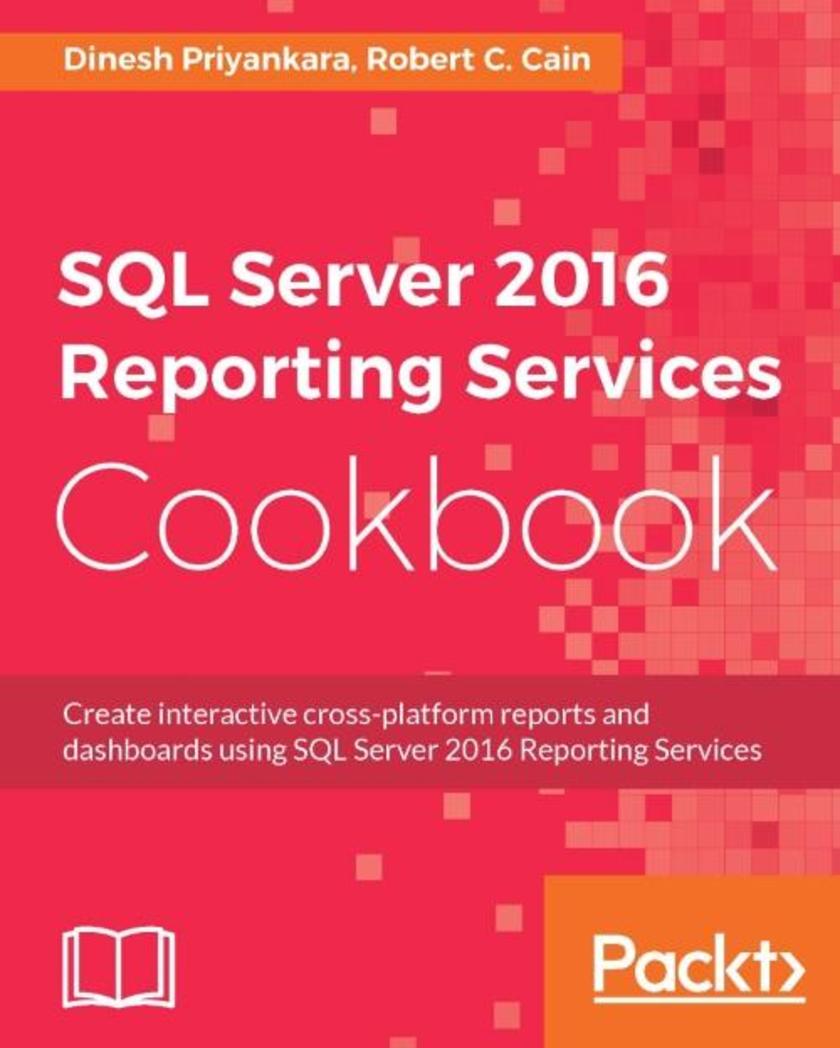
SQL Server 2016 Reporting Services Cookbook
¥99.18
Create interactive cross-platform reports and dashboards using SQL Server 2016 Reporting Services About This Book Get up to speed with the newly-introduced enhancements and the more advanced query and reporting features Easily access your important data by creating visually appealing dashboards in the Power BI practical recipe Create cross-browser and cross-platform reports using SQL Server 2016 Reporting Services Who This Book Is For This book is for software professionals who develop and implement reporting solutions using Microsoft SQL Server. It is especially relevant for professionals who are software engineers, software architects, DW/BI engineers, and DW/BI architects who perform simple to complex report authoring implementations. This book is also suitable for those who develop software solutions that integrate reporting solutions and are keen to learn about Microsoft SQL Server 2016’s features and capabilities. What You Will Learn Key capabilities, architecture, and components of Reporting Services New features that have been added to Reporting Services Design the architecture for reporting solutions Design the architecture for BI solutions Implement reporting solutions using Reporting Services Improve the performance, availability, and scalability of the reporting solution Enhance reporting solutions with custom programming and improved security In Detail Microsoft SQL Server 2016 Reporting Services comes with many new features. It offers different types of reporting such as Production, Ad-hoc, Dashboard, Mash-up, and Analytical. SQL Server 2016 also has a surfeit of new features including Mobile Reporting, and Power BI integration. This book contains recipes that explore the new and advanced features added to SQL Server 2016. The first few chapters cover recipes on configuring components and how to explore these new features. You’ll learn to build your own reporting solution with data tools and report builder, along with learning techniques to create visually appealing reports. This book also has recipes for enhanced mobile reporting solutions, accessing these solutions effectively, and delivering interactive business intelligence solutions. Towards the end of the book, you’ll get to grips with running reporting services in SharePoint integrated mode and be able to administer, monitor, and secure your reporting solution. This book covers about the new offerings of Microsoft SQL Server 2016 Reporting Services in comprehensive detail and uses examples of real-world problem-solving business scenarios. Style and approach This comprehensive cookbook follows a problem-solution approach to help you overcome any obstacle when creating interactive, visually-appealing reports using SQL Server 2016 Reporting Services. Each recipe focuses on a specific task and is written in a clear, solution-focused style.
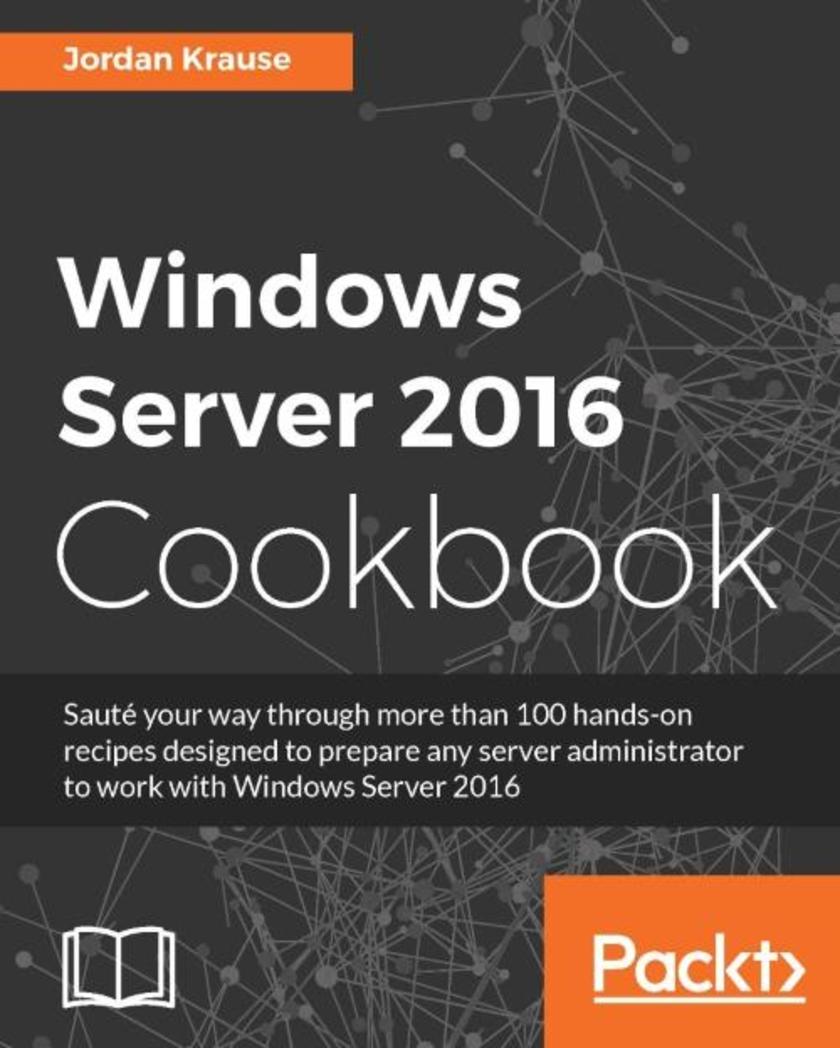
Windows Server 2016 Cookbook
¥107.90
Sauté your way through more than 100 hands-on recipes designed to prepare any server administrator to work with Windows Server 2016 About This Book Get the first book on the market to unleash the power of Windows Server 2016, which improves the lives of thousands of enterprise users Be the first to leverage the advent of Containers and Nano Server on Windows Server 2016, which utilizes the resources efficiently and increases productivity. This practical, recipe-based approach helps you to delivering global-scale cloud services into your infrastructure using Windows Server 2016 Who This Book Is For This book is for system administrators and IT professionals with experience in Windows Server 2012 R2 environments who are looking to acquire the skills and knowledge necessary to manage and maintain the core infrastructure required for a Windows Server 2016 environment. What You Will Learn Build the infrastructure required for a successful Windows network Navigate the new Server 2016 interface efficiently Implement solid networking and security practices into your Windows Server environment Design your own PKI and start issuing certificates today Explore the brand-new Nano Server functionality Enable nested virtualization on Hyper-V and Server Connect your remote laptops back to the corporate network using Microsoft's own remote access technologies, including DirectAccess Provide a centralized point for users to access applications and data by configuring Remote Desktop Services Compose optimal Group Policies Facilitate task automation with PowerShell 5.0 *ing In Detail This hands-on Cookbook is stuffed full of practical recipes that will help you handle the essential administrative tasks in Windows Server 2016. You’ll start by familiarizing yourself with the look and feel of Windows Server 2016, and will then learn how to navigate through some daily tasks using the graphical interface. You will see how to compose optimal Group Policies and facilitate task automation with PowerShell 5.0 *ing. We will also take a look at the functions available to provide remote network access to your traveling users, and explore the much anticipated Nano Server and Hyper-V built-in integration support that is brand new in Windows Server 2016. By the end of this book, you will know how to take your Windows Server 2016-powered server and turn it into any common infrastructure role that might be required in your company. Style and approach The book follows a recipe-based approach that starts with an introduction and the installation of Windows Server 2016, then dives into the powerful features, and then ends with the concept of security.
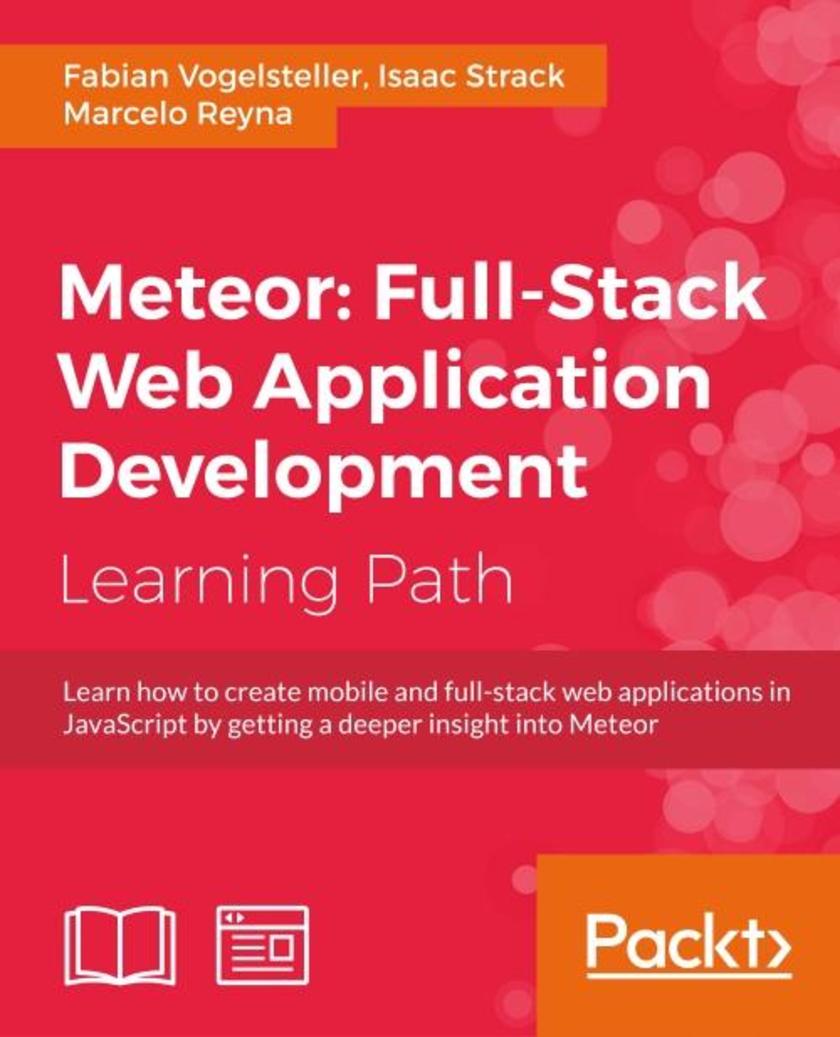
Meteor: Full-Stack Web Application Development
¥152.59
Learn how to create mobile and full-stack web applications in JavaScript by getting a deeper insight into Meteor About This Book This step-by-step tutorial will show you how to build fast, complex web applications Over 65 hands-on recipes help you build and deploy elegant web applications Optimize your web application for production use Who This Book Is For If you are a web developer who is familiar with Meteor and has basic knowledge of web development, and you now want to explore new paradigms of single-page, real-time applications, this course is perfectly suited for you. What You Will Learn Secure your site with Meteor best practices Create reactive templates that update themselves when data changes Add routing to a single-page application and make it appear like a real website Make your own Meteor packages and see how to make them public Rapidly build robust, responsive user interfaces Publish your own reusable custom packages Optimize your site for load speed with advanced publishers and subscribers Master the intricacies of front-end development using Jeet, Bootstrap, CSS animations, and more Leverage the aggregation framework to produce results with big data Optimize your site for search engine visibility In Detail Meteor is best JavaScript development platform and is packed with collections of libraries and packages bound together in a tidy way to take care of everything from development to production, making your web development easier. This course follows a learning path divided into three modules. Each module is a mini course in its own right, taking your knowledge to a new level as you progress. The first module takes you from the installation of Meteor to building a fully working web blog (including back end) to create and edit posts. Your path will begin with the basic concepts and folder structure of a Meteor project, learning how Meteor templates work to test packages, and seeing the application itself. The second module is a cookbook that starts with simple recipes designed for quick reference, and culminating advanced recipes that walk you through building and deploying a complete application. The cookbook covers all the major areas of Meteor development, including lesser-known and undocumented features too. With all the important concepts covered in the previous modules, the third module will get you equipped with simple solutions to boost your development skills. You’ll learn about mapping of real-world data and optimizing it, how to optimize and secure web applications and how to deploy and maintain it without breaking its features. Throughout the module, you will put your skills into practice and build an online shop from scratch. This Learning Path combines some of the best that Packt has to offer in one complete, curated package. It includes content from the following Packt products: Building Single-page Web Apps with Meteor, Fabian Vogelsteller Meteor Cookbook, Isaac Strack Meteor Design Patterns, Marcelo Reyna Style and approach This practical handbook has a step-by-step approach to help you improve your developer skills and efficiently built web applications using Meteor.

JIRA 7 Essentials - Fourth Edition
¥107.90
Explore the great features of the all-new JIRA 7 to manage projects and effectively handle bugs and software issues About This Book Updated for JIRA 7, this book covers all the new features introduced in JIRA 7 with a dedicated chapter on JIRA Service Desk—one of the biggest new add-ons to JIRA This book lays a strong foundation to work with agile projects in JIRA from both the administrator and end user's perspective Work through step-by-step exercises at the end of each chapter for you to try out and reinforce your skills Who This Book Is For This book will be especially useful for project managers but it's also intended for other JIRA users, including developers, and any other industry besides software development, who would like to leverage JIRA’s powerful task management and workflow features to better manage their business processes. What You Will Learn Understand JIRA's data hierarchy and how to design and work with projects in JIRA Plan and set up a new JIRA 7 instance from scratch for production use Using JIRA for agile software projects, business process management, customer service support, and more Understand issues and work with them Design both system and custom fields to behave differently under different contexts Create and design your own screens and apply them to different project and issue types Gain an understanding of the workflow and its various components Set up both incoming and outgoing mail servers to work with e-mails In Detail Atlassian JIRA is an enterprise-issue tracker system. One of its key strengths is its ability to adapt to the needs of the organization, ranging from building Atlassian application interfaces to providing a platform for add-ons to extend JIRA's capabilities. JIRA 7 Essentials, now in its fourth edition, provides a comprehensive explanation covering all major components of JIRA 7, which includes JIRA Software, JIRA Core, and JIRA Service Works. The book starts by explaining how to plan and set up a new JIRA 7 instance from scratch for production use before moving on to the more key features such as e-mails, workflows, business processes, and so on. Then you will understand JIRA's data hierarchy and how to design and work with projects in JIRA. Issues being the corner stone of using JIRA, you will gain a deep understanding of issues and their purpose. Then you will be introduced to fields and how to use custom fields for more effective data collections. You will then learn to create new screens from scratch and customize it to suit your needs. The book then covers workflows and business processes, and you will also be able to set up both incoming and outgoing mail servers to work with e-mails. Towards the end, we explain JIRA's security model and introduce you to one of JIRA’s new add-ons: JIRA Service Desk, which allows you to run JIRA as a computer support portal. Style and approach This is a comprehensive, practical guide on using JIRA to efficiently manage all your projects. It provides clear, step-by-step explanations, and shows how you can use the various features of JIRA to manage your projects more efficiently.
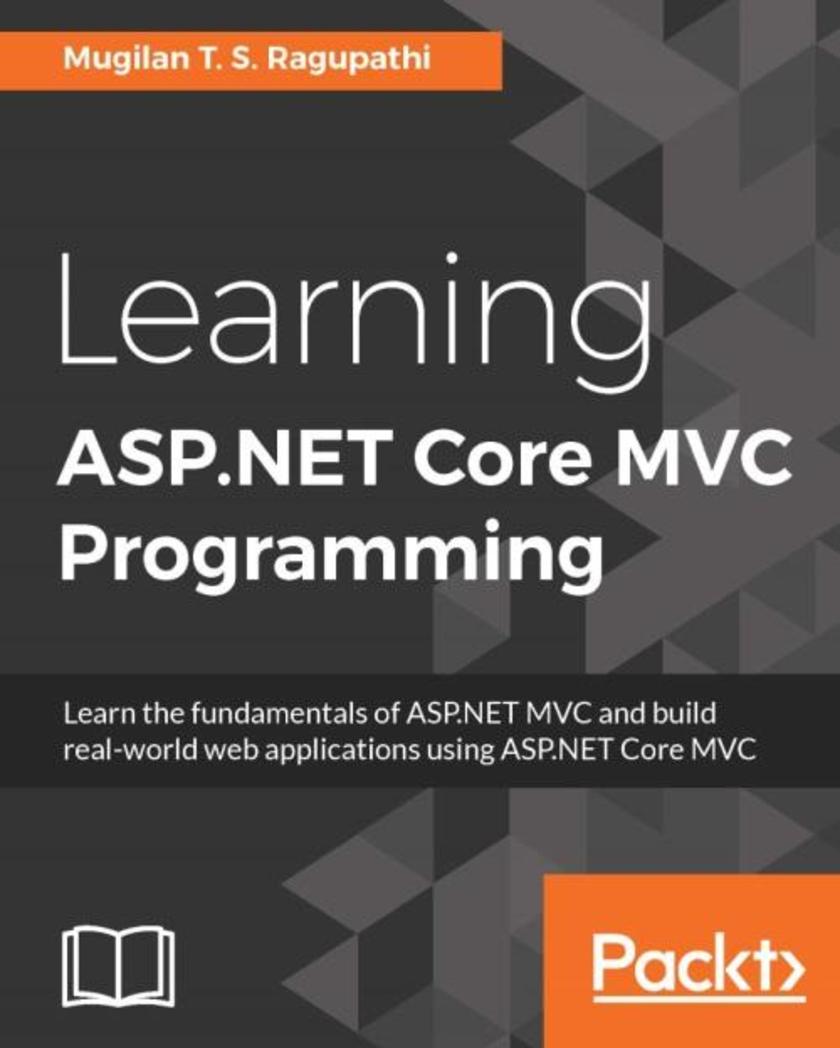
Learning ASP.NET Core MVC Programming
¥80.65
Learn the fundamentals of ASP.NET MVC and build real-world web applications using ASP.NET Core MVC About This Book Get a first-principles coverage of ASP.NET MVC and the latest release, Core This book is uniquely designed for developers who are looking to transition their skills into the .NET development field The standalone chapter structure leaves you free to explore ASP.NET MVC to immediately solve your pain points Who This Book Is For This book is for developers who want to learn to build web applications using ASP.NET Core, developers who want to make a career building web applications using Microsoft technology, and developers who are working in Ruby on Rails or other web frameworks and want to learn ASP.NET Core MVC. No knowledge of the ASP.NET platform or the .NET platform is required. Even though you do not need to have experience in C#, an understanding of the basic constructs (loops, conditionals, classes, and objects) of any modern programming language would be helpful. What You Will Learn Get to know the concepts of ASP.NET MVC and build a new static web page using HTML, CSS, and jQuery Set up a development environment and run a sample application using the template Create a Controller with action methods Build a view using several features of the Razor View engine Construct a Model for ASP.NET Core MVC application Devise a custom mechanism to provide maximum flexibility to your application through routing Validate the user input on the client side using jQuery Enhance your applications using Bootstrap Explore new configuration and deployment scenarios—step by step guide to deploying ASP.NET Core web application in Linux In Detail ASP.NET Core MVC helps you build robust web applications using the Model-View-Controller design. This guide will help you in building applications which can be deployed on non-windows platforms such as Linux. In today’s age, it is crucial that you possess the ability to separate the programming and business logic, and this is exactly what ASP.NET Core MVC application will help you achieve. This version comes with a number of improvements that enable fast, TDD-friendly development to create sophisticated applications. You would also learn the fundamentals of Entity framework and on how to use the same in ASP.NET Core web applications. The book presents the fundamentals and philosophies of ASP.NET Core. Starting with an overview of the MVC pattern, we quickly dive into the aspects that you need to know to get started with ASP.NET. You will learn about the core architecture of model, view, and control. Integrating your application with Bootstrap, validating user input, interacting with databases, and deploying your application are some of the things that you will be able to execute with this fast-paced guide. The end of the book will test your knowledge as you build a fully working sample application using the skills you’ve learned throughout the book. Style and approach This book takes a first-principles approach to help you understand and implement ASP.NET MVC solutions. It is focused primarily on giving you practical skills rather than the old conventional theoretical teaching.
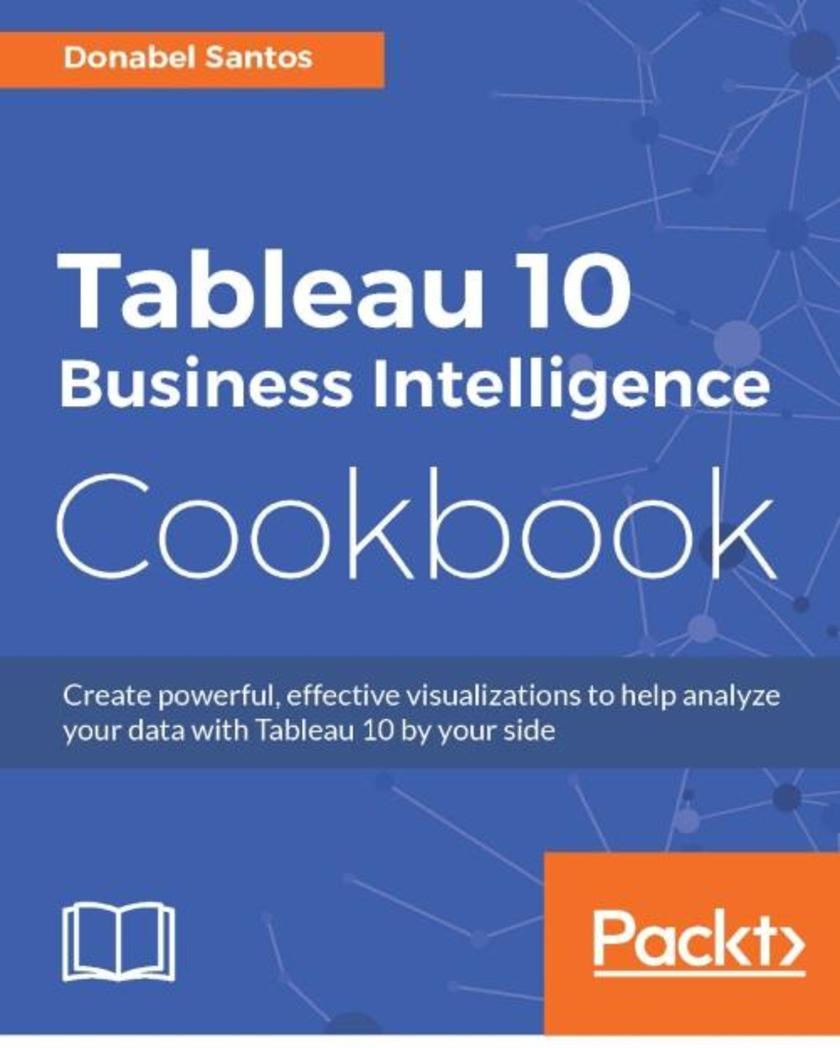
Tableau 10 Business Intelligence Cookbook
¥90.46
Create powerful, effective visualizations to help analyze your data with Tableau 10 by your side About This Book Cook your favorite Tableau 10 business intelligence recipe with the help of this easy-to-follow book Build beautiful, interactive dashboards and visualizations in Tableau 10 that help you make informed decisions This rich collection of independent recipes cover everything needed to become an advanced Tableau user and get an edge over other Tableau users Who This Book Is For This book is targeted to business, data, and analytics professionals who want to build rich interactive visualizations using Tableau. Familiarity with previous versions of Tableau would be helpful, but is not necessary. What You Will Learn Become familiar with the Tableau interface Build basic to more advanced charts with step-by-step recipes Use filters, calculated fields, parameters, and actions to add interactivity to charts and dashboards Prepare and transform data for analysis using Tableau’s built-in tools and functions Create effective and compelling dashboards and story points Leverage Tableau’s mapping capabilities to visualize location and shape data Integrate analytics and forecasting to enhance data analysis Get to know tips and tricks to work more quickly and effectively in Tableau Increase your confidence and competence in creating rich, interactive visualizations in Tableau In Detail Tableau is a software tool that can speed up data analysis through its rich visualization capabilities, and help uncover insights for better and smarter decision making. This book is for the business, technology, data and analytics professionals who use and analyze data and data-driven approaches to support business operations and strategic initiatives in their organizations. This book provides easy-to-follow recipes to get the reader up and running with Tableau 10, and covers basic to advanced use cases and scenarios. The book starts with building basic charts in Tableau and moves on to building more complex charts by incorporating different Tableau features and interactivity components. There is an entire chapter dedicated to dashboard techniques and best practices. A number of recipes specifically for geospatial visualization, analytics, and data preparation are also covered. By the end of this book, you’ll have gained confidence and competence to analyze and communicate data and insights more efficiently and effectively by creating compelling interactive charts, dashboards, and stories in Tableau. Style and approach This book is a collection of independent recipes that cover a wide range of options for data visualization on offer with Tableau. With the help of the recipes in this book, you can explore Tableau and pick the business intelligence solution that’s best suited for your needs.
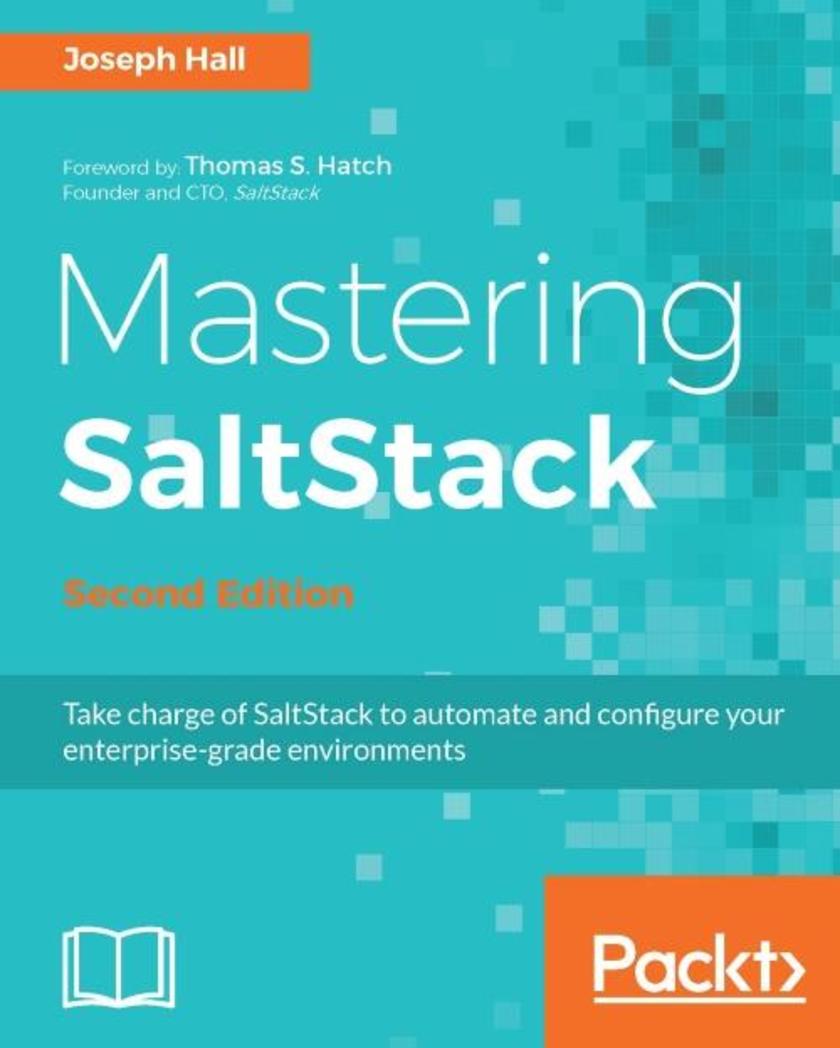
Mastering SaltStack - Second Edition
¥90.46
Take charge of SaltStack to automate and configure your enterprise-grade environments About This Book Automate tasks effectively and take charge of your infrastructure Effectively scale Salt to manage thousands of machines and tackle everyday problems Explore Salt’s inner workings and advance your knowledge of it Who This Book Is For This book is ideal for IT professionals and ops engineers who already manage groups of servers, but would like to expand their knowledge and gain expertise with SaltStack. This book explains the advanced features and concepts of Salt. A basic knowledge of Salt is required in order to get to grips with advanced Salt features. What You Will Learn Automate tasks effectively, so that your infrastructure can run itself Start building more complex concepts Master user-level internals Build scaling strategies Explore monitoring strategies Learn how to troubleshoot Salt and its subcomponents Explore best practices for Salt In Detail SaltStack is a powerful configuration management and automation suite designed to manage servers and tens of thousands of nodes. This book showcases Salt as a very powerful automation framework. We will review the fundamental concepts to get you in the right frame of mind, and then explore Salt in much greater depth. You will explore Salt SSH as a powerful tool and take Salt Cloud to the next level. Next, you’ll master using Salt services with ease in your infrastructure. You will discover methods and strategies to scale your infrastructure properly. You will also learn how to use Salt as a powerful monitoring tool. By the end of this book, you will have learned troubleshooting tips and best practices to make the entire process of using Salt pain-free and easy. Style and approach This book follows a step-by-step conversational tone. Topics are covered in detail through examples and a user-friendly approach.
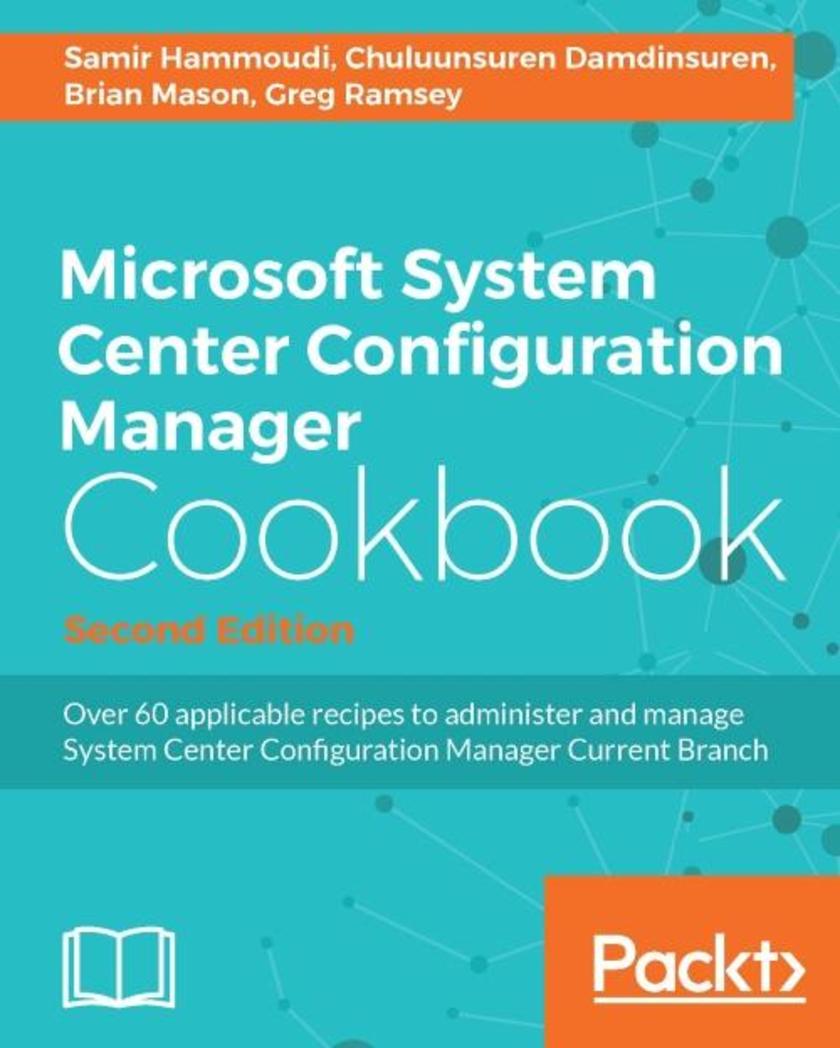
Microsoft System Center Configuration Manager Cookbook - Second Edition
¥107.90
Over 60 applicable recipes to administer and manage System Center Configuration Manager Current Branch About This Book Overcome the challenges of administering System Center Configuration Manager when deploying single and multiple-hierarchy sites Help your organization to build a custom-line of business apps and also protect the server against malware threats with Endpoint protection Get easy guidance and best practices to help you work with SCCM Who This Book Is For If you are an intermediate to advanced administrator who wants to administer SCCM and understand how to solve particular problems/scenarios, then this book is for you. You should have a working knowledge of SCCM, however, knowledge of the latest version is not required. What You Will Learn Administer System Center Configuration Manager Upgrade computers from Windows 7/ 8.x to Windows 10, using Serivce Plans to keep Windows 10 machines up to date Manage Compliance Settings effectively and monitor it with SSRS Manage Sites in System Center Configuration Manager and also learn to create collections, leverage role-based administration (RBA), and support clients over the internet without a VPN connection Implement multiple methods to deploy the client, as well as how to be proactive in monitoring client agent health Achieve Mobile device management with Microsoft Intune In Detail This practical cookbook is based on the 1602 current branch of System Center Configuration Manager (SCCM). It shows you how to administer SCCM, giving you an essential toolbox of techniques to solve real-world scenarios. Packed with over 60 task-based and instantly usable recipes, you’ll discover how design a SCCM Infrastructure, and dive into topics such as the recommended SQL configuration for SCCM and how to deploy Windows 10 with Operating System Deployment (OSD). You will learn to easily manage Windows 10 devices by deploying applications, software updates, and feature upgrades, andl be able to leverage Mobile Device Management (MDM) using SCCM and Microsoft Intune. Finally, you see how to gather the inventory of all your PC park and create reports based on it. By the end of the book, you will have learned the best practices when working with SCCM and have a handy reference guide for troubleshooting. Style and approach This cookbook is full of quick recipes that show you how to administer SCCM and will help you understand how to solve particular problems/situations encountered in day-to-day tasks.
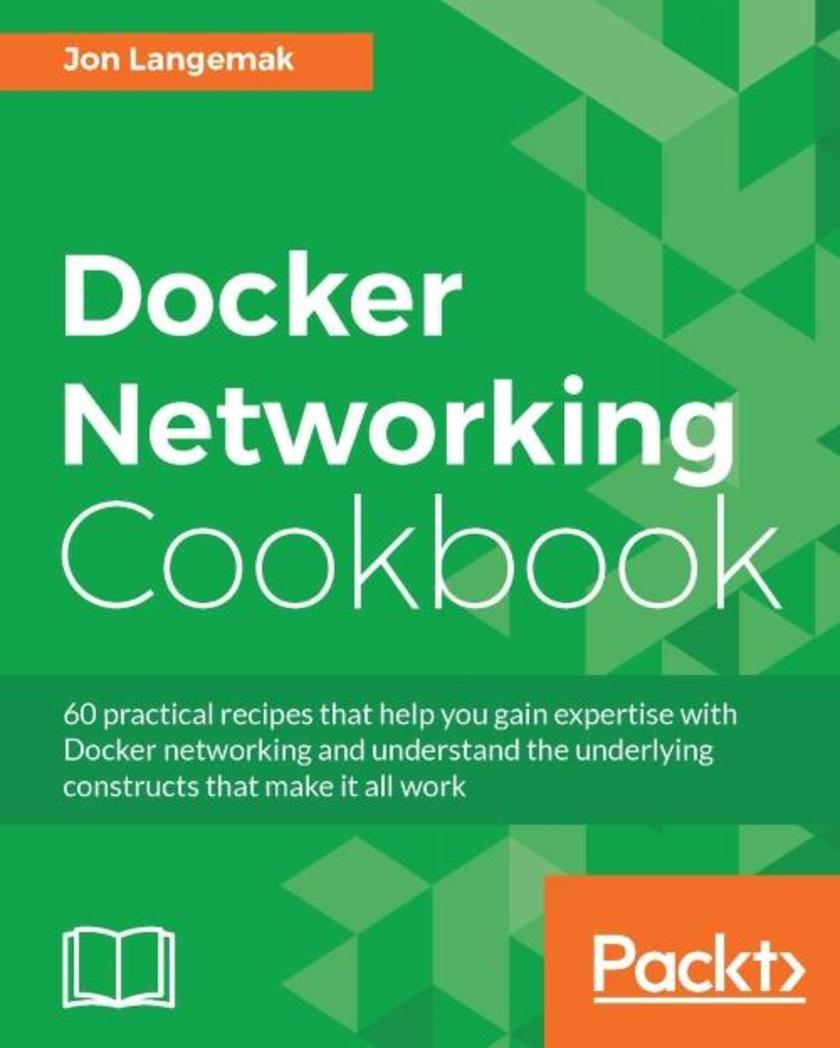
Docker Networking Cookbook
¥90.46
60 practical recipes that help you gain expertise with Docker networking and understand the underlying constructs that make it all work About This Book Enhance your Docker networking skills and protect your organization using advanced networking functions Learn how to use third party tools to extend Docker networking This practical and recipe-based book demonstrates the different ways in which you can network containers leveraging the Docker engine. Who This Book Is For The book is for system administrators as well as developers who are well versed with the concepts of Docker and have basic knowledge of Docker networking. You should also have sound knowledge of networking in general. What You Will Learn Configure Linux networking primitives used by Docker networking Build and deploy user-defined Docker networks Examine the different options for resolving and linking containers Implement custom networks for Docker to consume Discover third-party networking plugins such as Weave and Flannel Work through solutions to secure Docker containers and networks Observe methodologies for troubleshooting container networks Explore advanced and experimental Docker networking features In Detail Networking functionality in Docker has changed considerably since its first release, evolving to offer a rich set of built-in networking features, as well as an extensible plugin model allowing for a wide variety of networking functionality. This book explores Docker networking capabilities from end to end. Begin by examining the building blocks used by Docker to implement fundamental containing networking before learning how to consume built-in networking constructs as well as custom networks you create on your own. Next, explore common third-party networking plugins, including detailed information on how these plugins inter-operate with the Docker engine. Consider available options for securing container networks, as well as a process for troubleshooting container connectivity. Finally, examine advanced Docker networking functions and their relevant use cases, tying together everything you need to succeed with your own projects. Style and approach This practical recipe-based book will take readers to next level of Docker networking. It covers relevant use cases and the advanced features of Docker
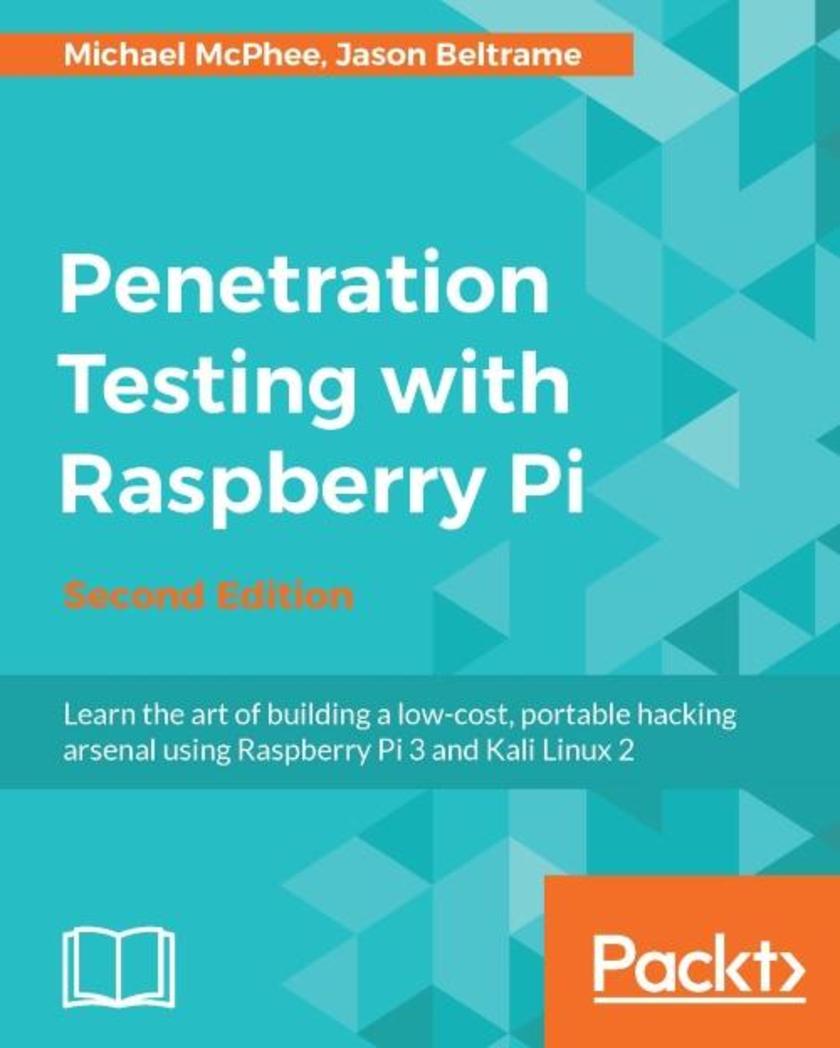
Penetration Testing with Raspberry Pi - Second Edition
¥71.93
Learn the art of building a low-cost, portable hacking arsenal using Raspberry Pi 3 and Kali Linux 2 About This Book Quickly turn your Raspberry Pi 3 into a low-cost hacking tool using Kali Linux 2 Protect your confidential data by deftly preventing various network security attacks Use Raspberry Pi 3 as honeypots to warn you that hackers are on your wire Who This Book Is For If you are a computer enthusiast who wants to learn advanced hacking techniques using the Raspberry Pi 3 as your pentesting toolbox, then this book is for you. Prior knowledge of networking and Linux would be an advantage. What You Will Learn Install and tune Kali Linux 2 on a Raspberry Pi 3 for hacking Learn how to store and offload pentest data from the Raspberry Pi 3 Plan and perform man-in-the-middle attacks and bypass advanced encryption techniques Compromise systems using various exploits and tools using Kali Linux 2 Bypass security defenses and remove data off a target network Develop a command and control system to manage remotely placed Raspberry Pis Turn a Raspberry Pi 3 into a honeypot to capture sensitive information In Detail This book will show you how to utilize the latest credit card sized Raspberry Pi 3 and create a portable, low-cost hacking tool using Kali Linux 2. You’ll begin by installing and tuning Kali Linux 2 on Raspberry Pi 3 and then get started with penetration testing. You will be exposed to various network security scenarios such as wireless security, scanning network packets in order to detect any issues in the network, and capturing sensitive data. You will also learn how to plan and perform various attacks such as man-in-the-middle, password cracking, bypassing SSL encryption, compromising systems using various toolkits, and many more. Finally, you’ll see how to bypass security defenses and avoid detection, turn your Pi 3 into a honeypot, and develop a command and control system to manage a remotely-placed Raspberry Pi 3. By the end of this book you will be able to turn Raspberry Pi 3 into a hacking arsenal to leverage the most popular open source toolkit, Kali Linux 2.0. Style and approach This concise and fast-paced guide will ensure you get hands-on with penetration testing right from the start. You will quickly install the powerful Kali Linux 2 on your Raspberry Pi 3 and then learn how to use and conduct fundamental penetration techniques and attacks.
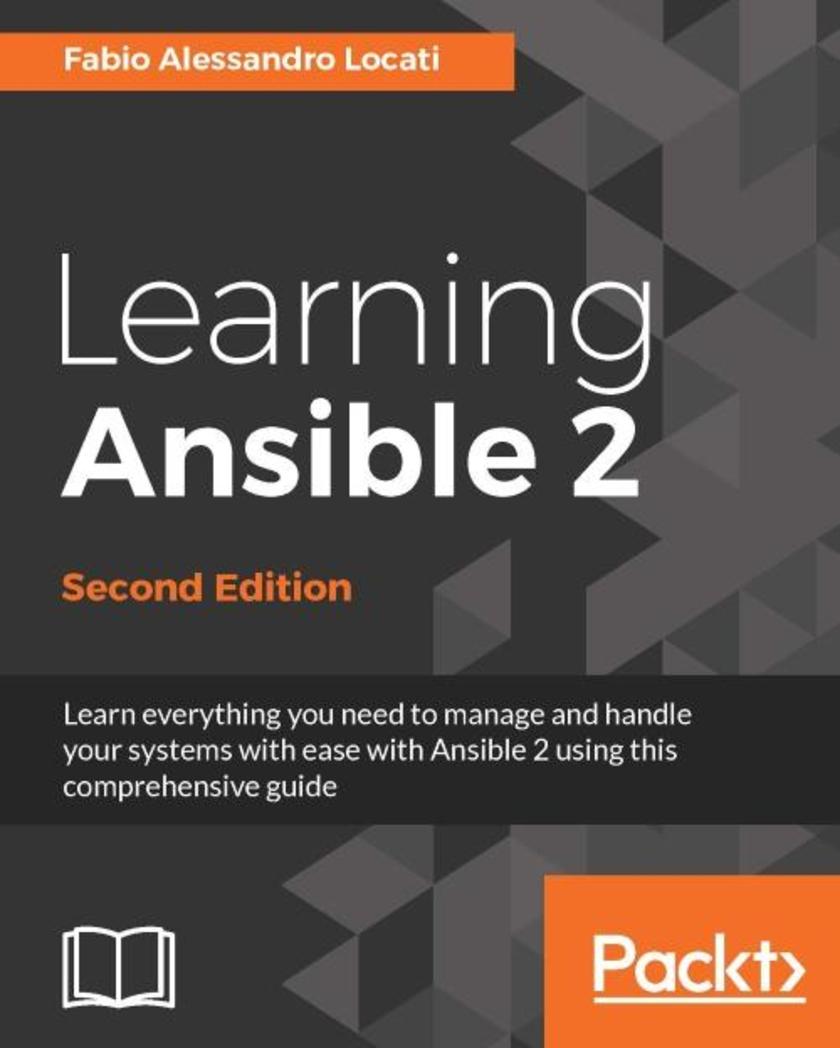
Learning Ansible 2 - Second Edition
¥80.65
Learn everything you need to manage and handle your systems with ease with Ansible 2 using this comprehensive guide About This Book Simplify the automation of applications and systems using the newest version of Ansible Get acquainted with fundamentals of Ansible such as playbooks, modules, and various testing strategies A comprehensive, learning guide that provides you with great skills to automate your organization’s infrastructure using Ansible 2 Who This Book Is For The book is for sys admins who want to automate their organization’s infrastructure using Ansible 2. No prior knowledge of Ansible is required. What You Will Learn Set up Ansible 2 and an Ansible 2 project in a future-proof way Perform basic operations with Ansible 2 such as creating, copying, moving, changing, and deleting files, and creating and deleting users Deploy complete cloud environments using Ansible 2 on AWS and DigitalOcean Explore complex operations with Ansible 2 (Ansible vault, e-mails, and Nagios) Develop and test Ansible playbooks Write a custom module and test it In Detail Ansible is an open source automation platform that assists organizations with tasks such as configuration management, application deployment, orchestration, and task automation. With Ansible, even complex tasks can be handled easier than before. In this book, you will learn about the fundamentals and practical aspects of Ansible 2 by diving deeply into topics such as installation (Linux, BSD, and Windows Support), playbooks, modules, various testing strategies, provisioning, deployment, and orchestration. In this book, you will get accustomed with the new features of Ansible 2 such as cleaner architecture, task blocks, playbook parsing, new execution strategy plugins, and modules. You will also learn how to integrate Ansible with cloud platforms such as AWS. The book ends with the enterprise versions of Ansible, Ansible Tower and Ansible Galaxy, where you will learn to interact Ansible with different OSes to speed up your work to previously unseen levels By the end of the book, you’ll able to leverage the Ansible parameters to create expeditious tasks for your organization by implementing the Ansible 2 techniques and paradigms. Style and approach This book is a step-by-step learning guide on the all new Ansible 2, which is an ideal configuration management tool.

Swift Data Structure and Algorithms
¥71.93
Master the most common algorithms and data structures, and learn how to implement them efficiently using the most up-to-date features of Swift 3 About This Book Develop a deep understanding of the collections in the Swift Standard Library with this step-by-step guide Develop native Swift data structures and algorithms for use in mobile, desktop, and server-based applications Learn about performance efficiency between different data structures and algorithms Who This Book Is For This book is for developers who want to learn how to implement and use common data structures and algorithms natively in Swift. Whether you are a self-taught developer without a formal technical background or you have a degree in Computer Science, this book will provide with the knowledge you need to develop advanced data structures and algorithms in Swift using the latest language features. What You Will Learn Get to know about the basic data structures and how to use the Swift REPL Use the Swift Standard Library collections bridging to Objective-C collections, and find out about protocol-oriented programming Find out about Swift generators and sequences, and see how to use them to implement advanced data structures such as Stack, StackList, Queue, and LinkedList Implement sorting algorithms such as Insertion Sort, Merge Sort, and Quick Sort and understand the performance trade-offs between them See how to implement various binary trees, B-Tree, and Splay Trees Perform advanced searching methods using Red-Black trees, AVL trees, and Trie trees, and take a look at several substring search algorithms Get to know about the data structures used in graphs and how to implement graphs such as depth-first search, breadth-first search, directed graphs, spanning tree, and shortest path Explore algorithm efficiency and see how to measure it In Detail Apple’s Swift language has expressive features that are familiar to those working with modern functional languages, but also provides backward support for Objective-C and Apple’s legacy frameworks. These features are attracting many new developers to start creating applications for OS X and iOS using Swift. Designing an application to scale while processing large amounts of data or provide fast and efficient searching can be complex, especially running on mobile devices with limited memory and bandwidth. Learning about best practices and knowing how to select the best data structure and algorithm in Swift is crucial to the success of your application and will help ensure your application is a success. That’s what this book will teach you. Starting at the beginning, this book will cover the basic data structures and Swift types, and introduce asymptotic analysis. You’ll learn about the standard library collections and bridging between Swift and Objective-C collections. You will see how to implement advanced data structures, sort algorithms, work with trees, advanced searching methods, use graphs, and performance and algorithm efficiency. You’ll also see how to choose the perfect algorithm for your problem. Style and approach This easy-to-follow yet comprehensive guide can either be read from beginning to end, or depending on your current knowledge level, you can jump to the specific chapter that interests you. Each chapter topic starts with an introduction to the topic and algorithm before moving on to the hands-on implementation and analysis.
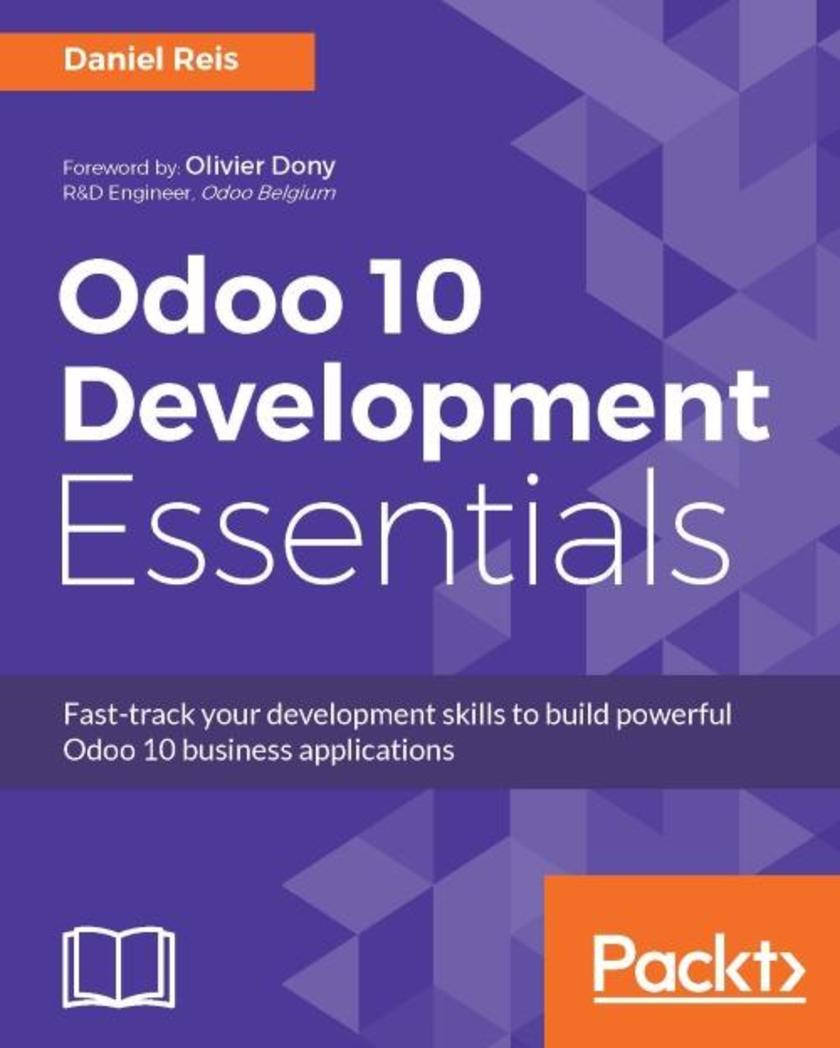
Odoo 10 Development Essentials
¥80.65
Fast-track your development skills to build powerful Odoo 10 business applications About This Book Get the most up-to-date guide on Odoo 10 and learn how to build excellent business applications with Odoo This example-rich, easy-to-follow guide enables you to build apps appropriate to your business needs Create solid business applications with the help of this precise, to-the-point guide Who This Book Is For This book caters to developers who are familiar with Python and MVC design and now want to build effective business applications using Odoo. What You Will Learn Install Odoo from source code and use all the basic techniques to setup and manage your Odoo server instances Create your first Odoo application Add Odoo's social and messaging features to your own modules Get to know the essentials of Models and Views Understand and use the server API to add business logic Use Qweb to create custom Reports Extend Odoo CMS features to create your own website controllers and pages Leverage Odoo Workflows on your applications Write module automated tests and debugging techniques Deploy your Odoo applications for production use In Detail Odoo is one of the fastest growing open source, business application development software products available. With announcement of Odoo 10, there are many new features added to Odoo and the face of business applications developed with Odoo has changed. This book will not only teach you how to build and customize business applications with Odoo, but it also covers all the new features that Odoo has to offer. This book is the latest resource on developing and customizing Odoo 10 applications. It comes packed with much more and refined content than its predecessor. It will start with building business applications from scratch and will cover topics such as module extensions, inheritance, working with data, user interfaces, and so on. The book also covers the latest features of Odoo 10, in addition to front end development, testing and debugging techniques. The book will also talk about Odoo Community and Odoo Enterprise. Style and approach This book follows a step-by-step practical approach where you will learn new concepts with every progressing chapter and create apps for business development.




 购物车
购物车 个人中心
个人中心



